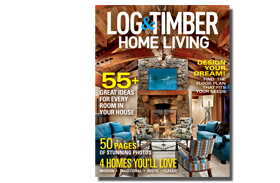If you’re looking for a unique way to safeguard your valuables, disguise a private office, mask a panic room or even amp up the fun in a kid’s playroom — all while adding functionality and a little extra display space to your house, adding a Murphy door just may be the answer. We chatted with Jeremy Barker, Founder and CEO of Murphy Door to get the inside scoop.
Whether it’s beds or doors, where does the name “Murphy” come from?
The name “Murphy” dates back to the early 1900s, when William L. Murphy invented the Murphy bed. He was living in a small apartment and wanted a way to make his bedroom double as a sitting room. So, he came up with this clever design — a bed that folded up into the wall.
Murphy doors follow that same kind of thinking. They’re built to blend seamlessly into a room, hidden behind a bookcase, cabinet or wall panel, so you get this combination of functionality and subtlety. They’re perfect for saving space but also have a smart design with a little bit of mystery — and people love that.
What are the most common reasons customers choose to incorporate a Murphy door?
People love Murphy doors for a few key reasons. One of the biggest is hidden access and security. A lot of our customers use them to conceal a safe room, a gun cabinet or even just a private office they want to keep out of sight.
Another big reason is space-saving. Instead of a regular door that just swings open, you’re getting a door that also functions as a bookshelf or a cabinet. It’s an efficient use of space, especially in smaller homes.
And then, of course, there’s the design factor. Murphy doors aren’t just practical but also visually interesting.
What are some examples of applications (rooms installed and ultimate end use)?
Murphy doors really show up in all kinds of places — it’s one of the things that makes them so fun and versatile. We see a lot of people using them for home offices. It’s a great way to create privacy, especially in open floor plans, without making the space feel too boxed in.
Pantries are another popular one. A hidden door can keep your kitchen looking clean and streamlined while still giving you easy access to your food storage. Same with closets or utility storage; people like being able to tuck everyday clutter behind a door that looks like a bookcase or built-in.
Then there are the more creative or secure uses like safe rooms. Concealing the entrance gives you that added sense of protection in an emergency. And wine cellars — those are always a hit.
Are there design options? For instance, do they always swing or can they slide?
Not all Murphy doors are the same! While the classic swinging style is popular, we also offer sliding versions that function more like pocket doors. Those are a great option if you’re working with a tight space and don’t have room for a full swing.
Design-wise, there’s a lot of flexibility. You can go with a bookcase look, of course, but we also do doors that look like mirrors, display shelves or even just clean paneling that blends right into the wall. You truly decide what it is you want and we will build it. So whether you want something that stands out or something totally discreet, there’s a design that can fit your space and your style.
Are there any special structural requirements when you buy a pre-fab Murphy door? How do you know what size you need?
Yes, there are a few structural things to keep in mind when you’re installing a pre-fab Murphy door. First, the doorway itself needs to be square and level — that’s key for making sure the door opens and closes properly, especially with heavier styles like bookcase doors.
If you're planning to install it in a load-bearing wall, you may need some extra support or framing adjustments to handle the weight and maintain structural integrity. As for sizing, it’s straightforward. You’ll want to measure your rough opening: height, width, and depth. That gives you what you need to select the right door and make sure everything fits snugly. We always recommend double-checking your measurements before you order, just to be safe.
Is there any special maintenance required? Do they need to be periodically adjusted?
Not much at all—Murphy doors are relatively low-maintenance. Occasionally, it’s a good idea to check the hinges or sliding tracks just to make sure everything’s still smooth and secure. Other than that, they pretty much take care of themselves. You get the function and the cool factor without a lot of upkeep.
Is it difficult to incorporate a Murphy door into a log or timber home? What advice would you give?
It’s absolutely doable. Just ensure you let us know the thickness of the logs so we can match the jamb thickness, and we are good to go. Our doors are measured just like a standard interior door. You’ll likely need to create a framed opening within the structure to support the Murphy door. These doors—especially the bookshelf styles—are heavy and need solid support to function properly and stay aligned over time.
Also, keep in mind that log walls are typically much thicker than standard drywall, so you may need to customize the sizing or installation method a bit. Working with your builder or architect early in the process is the best way to make sure everything integrates seamlessly. But once it’s in, it blends beautifully with the natural wood aesthetic and adds a really unique, functional design element to the space.













